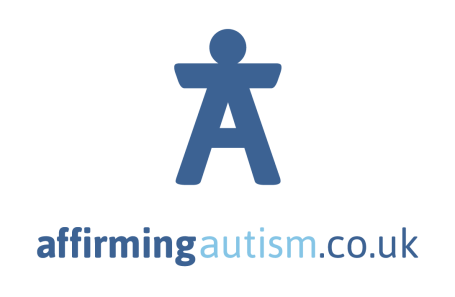What Is Masking?
Masking refers to the conscious or unconscious effort autistic people make to hide or suppress their natural traits in order to fit into social environments. This can include mimicking others, forcing eye contact, scripting conversations, suppressing stimming, or pretending to understand social cues that feel confusing or unclear.
Masking is often developed as a survival strategy—especially in childhood or early adulthood—when being "different" led to exclusion, criticism, or misunderstanding.
How We Support Unmasking
At Affirming Autism, we:
- Recognise masking as a valid survival response, not a sign of “coping well”
- Understand that a polished exterior often hides real struggles
- Create safe, affirming environments where clients don’t need to mask
- Help people reconnect with their authentic selves during and after the diagnostic process
If you’ve spent years masking without understanding why, you’re not alone—and we’re here to help you explore what’s underneath the mask with care and compassion
How our assessments are different
At Affirming Autism, we understand that many autistic adults have become experts at hiding their differences. Whether consciously or unconsciously, masking can make it harder to recognise autistic characteristics—both for the individual and for professionals unfamiliar with how autism presents in adulthood.
That’s why our diagnostic assessments are specifically designed to:
Recognise masked or internalised traits — We look beyond surface behaviours to understand how and why someone interacts the way they do.
Use affirming, adult-appropriate strategies — We draw from a range of evidence-based tools that reflect how autism presents in adults of all genders, not just childhood stereotypes.
Explore lived experience in depth — We don’t rely on a checklist of visible behaviours. Instead, we focus on patterns across your life: sensory differences, social fatigue, hyper focus or interests, and how you’ve adapted over time.
Validate how masking has shaped your identity — Rather than seeing masking as a “lack of autistic characteristics,” we recognise it as a common response to living in a world not designed for neurodivergent people.
Hold space for both clarity and uncertainty — If you’re not sure whether you're autistic or have spent years doubting yourself, we approach your story with care—not judgment.
We also offer post-assessment support, because unmasking—once you begin—is a process. Many people find that receiving a diagnosis gives them permission to stop performing and start reconnecting with their authentic selves
How and Why People Mask
Autistic individuals may mask in order to:
- Avoid bullying, rejection, or social isolation
- Succeed in school or the workplace
- Meet others’ expectations or appear “normal”
- Be perceived as competent or capable
- Stay safe in environments that feel overwhelming or invalidating
Masking can happen in all environments, but it’s especially common in professional, educational, or unfamiliar social situations. Many people who mask don’t realise they’re doing it—it can become so habitual that it feels like second nature.
Who Is Most Likely to Mask?
Masking is common in all autistic people, but research and lived experience show it is especially prevalent among:
- Women and AFAB (assigned female at birth) individuals
- Non-binary and gender-diverse people
- Late-diagnosed or undiagnosed adults
- People from marginalised racial or cultural backgrounds
These individuals often experience additional pressure to conform, and may have been overlooked for diagnosis due to stereotypes of how autism “should” look
The Cost of Masking
While masking can help people navigate everyday life, it often comes at a high emotional cost. Over time, it can lead to:
- Chronic exhaustion or burnout
- Anxiety, depression, or identity confusion
- Loss of connection with your authentic self
- Delayed diagnosis and misunderstood support needs
Many adults who come to us describe a feeling of always performing—never being fully “off,” even when alone. They may struggle to know who they are underneath the mask.
Unmasking Starts With Understanding
Many of our clients tell us their diagnosis was the first time they felt truly seen. Once masking is recognised, people often begin to:
- Understand their past with greater clarity
- Reduce self-blame and internalised ableism
- Make changes that support their actual needs
- Feel more authentic, grounded, and empowered
You don’t have to “look autistic” to be autistic. If you’ve been masking your entire life, you deserve a diagnosis process that sees the real you.
